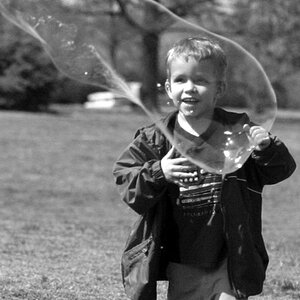vintagesnaps
Been spending a lot of time on here!
- Joined
- Jan 13, 2013
- Messages
- 9,119
- Reaction score
- 3,109
- Location
- US
- Can others edit my Photos
- Photos NOT OK to edit
Hmm, couple of those look to me like the film may not have advanced properly. My Vitomatic has a longer, umm, I don't know what you'd call it - the lever moves forward farther than most of my other cameras so I have to make sure I advance the lever all the way. Or maybe the shutter isn't releasing properly or the camera itself isn't advancing film properly?
The second one looks like it might be a double exposure, is it possible you didn't advance the film and took a second picture? (not that I've ever managed to do that! lol yeah right) So maybe you got two exposures in one frame of film.
I'm thinking you might need to shoot another test roll and write down what you do for each shot to see if you can get a roll of consistently exposed images. When you went down the street you may have been in different light so the same settings may not have worked the same in each location.
You could even play around and practice a little with getting a feel for the camera without putting film in it.
The second one looks like it might be a double exposure, is it possible you didn't advance the film and took a second picture? (not that I've ever managed to do that! lol yeah right) So maybe you got two exposures in one frame of film.
I'm thinking you might need to shoot another test roll and write down what you do for each shot to see if you can get a roll of consistently exposed images. When you went down the street you may have been in different light so the same settings may not have worked the same in each location.
You could even play around and practice a little with getting a feel for the camera without putting film in it.







![[No title]](/data/xfmg/thumbnail/33/33450-b94d8a06a911e01c39df688c57b4745e.jpg?1619735974)
![[No title]](/data/xfmg/thumbnail/32/32708-c55da623febe9d91efe5f28aa54c3090.jpg?1619735612)

![[No title]](/data/xfmg/thumbnail/33/33449-978bff23ad40c63da778b7e59d54f546.jpg?1619735974)
![[No title]](/data/xfmg/thumbnail/39/39294-339c772c727b255b9451f2639f2bc28e.jpg?1619738959)


![[No title]](/data/xfmg/thumbnail/42/42350-49b17d39599ec1d51c6d801ea651d3af.jpg?1619740148)